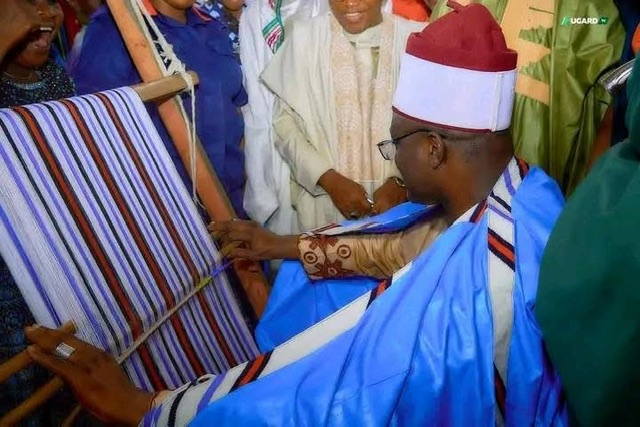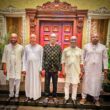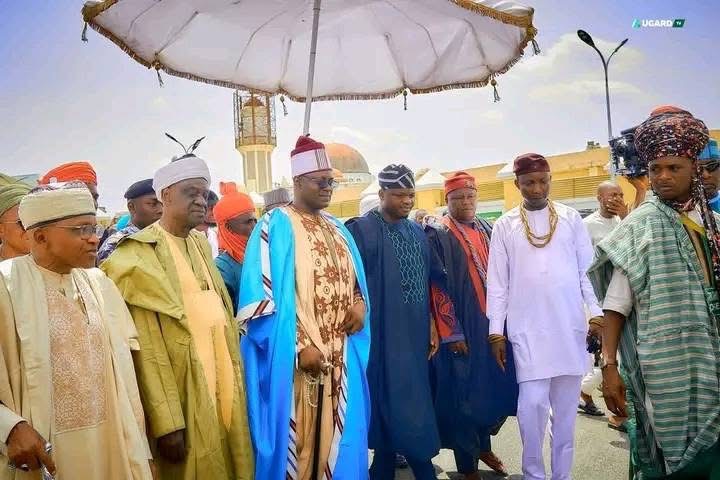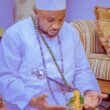Okene, Kogi State – April 24, 2025
A recent photo series of His Royal Majesty, the Ohinoyi of Ebira Land, engaging in traditional weaving has stirred conversation across Ebira communities and beyond. The images, which have gone viral on social media, depict the revered monarch seated as a weaver, carefully replicating the age-old craft of creating the cultural Ebira attire.
Traditionally regarded as a women’s craft within Ebira heritage, weaving holds a deep cultural significance, passed down through generations of mothers and daughters. The Ohinoyi’s symbolic participation in the art has been interpreted by many as an effort to preserve and promote the kingdom’s rich cultural identity.
While some observers have praised the monarch for embracing and showcasing the cultural legacy of the Ebira people in such a personal way, others have expressed strong reservations.
One critic wrote: “Very wrong of him to do so… His wife is the right person to do this.” Another comment read: “When you put someone on a throne that doesn’t know anything about culture… gosh.” Some viewed the gesture as a break from established tradition, arguing that it undermines gender-specific roles associated with the practice.

However, others have come to the monarch’s defense, applauding his humility and cultural consciousness. “My love for this man… May Almighty Allah continue to guide you from the hands of evil doers,” one supporter posted, highlighting the reverence still held by many for the royal figure.
The palace has yet to issue an official statement in response to the commentary, but the gesture intentional or symbolic has ignited a deeper discourse on tradition, gender roles, and cultural preservation in modern-day Ebira society.
Traditionally regarded as a women’s craft within Ebira heritage, weaving holds a deep cultural significance, passed down through generations of mothers and daughters. The Ohinoyi’s symbolic participation in the art has been interpreted by many as an effort to preserve and promote the kingdom’s rich cultural identity.
While some observers have praised the monarch for embracing and showcasing the cultural legacy of the Ebira people in such a personal way, others have expressed strong reservations.
One critic wrote: “Very wrong of him to do so… His wife is the right person to do this.” Another comment read: “When you put someone on a throne that doesn’t know anything about culture… gosh.” Some viewed the gesture as a break from established tradition, arguing that it undermines gender-specific roles associated with the practice.
However, others have come to the monarch’s defense, applauding his humility and cultural consciousness. “My love for this man… May Almighty Allah continue to guide you from the hands of evil doers,” one supporter posted, highlighting the reverence still held by many for the royal figure.
The palace has yet to issue an official statement in response to the commentary, but the gesture intentional or symbolic has ignited a deeper discourse on tradition, gender roles, and cultural preservation in modern-day Ebira society.







